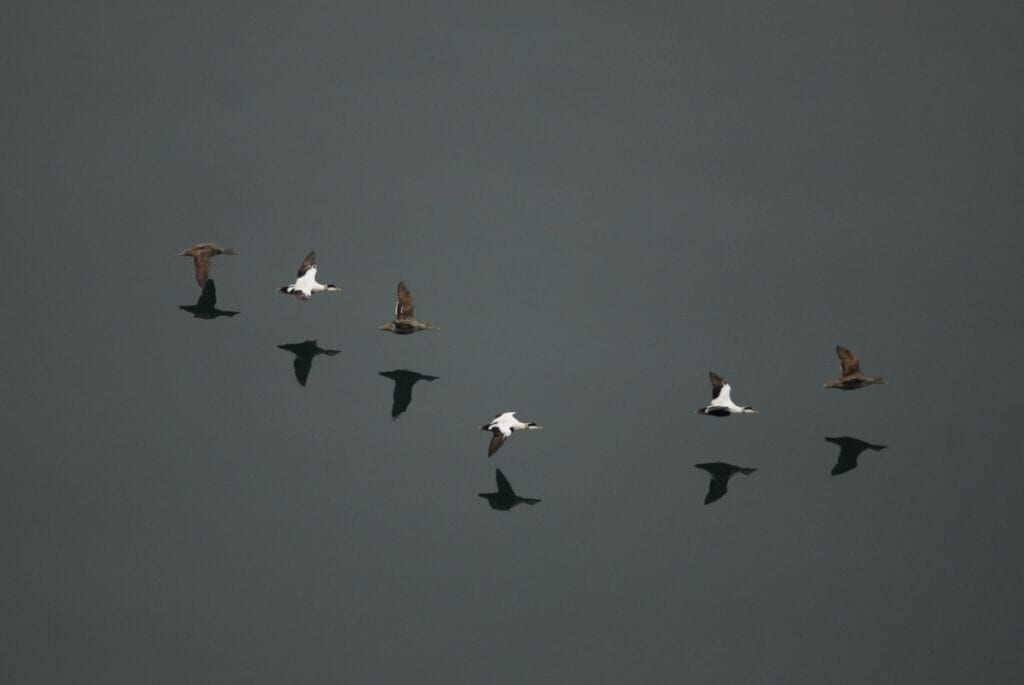Winter extratropical cyclones cause reduced eider survival
A study of eider populations from northern Canada, Svalbard and northern Norway revealed significant negative correlations between winter extratropical cyclones and adult survival of female eiders, but the underlying mechanisms differed between and within populations.
Changing weather
Extratropical cyclones play a primary role in determining variation in local weather and marine conditions at mid-latitudes. They have a broad range of intensities and their paths, frequency, and intensity may change with global warming. However, how extratropical cyclones effect marine wildlife is poorly known. Based on datasets from three different breeding populations (2 arctic and 1 subarctic) of common eider, this study assessed the relationship between winter extratropical cyclones and female eider survival.
Reduced survival
Eider survival was negatively correlated with winter extratropical activity, but different mechanisms appeared to be involved in the different populations. The number of winter extratropical cyclones was linked to the survival in a Canadian arctic population. The scientists point out that a lack of natural climate shelters (e.g. fjords) on their wintering grounds can affect some of the population directly. The survival of birds from Svalbard and northern Norway, as well as birds from the Canadian population that wintering in Greenland, was affected by the amplitude and duration of winter extratropical cyclones. Here the effect was lagged, most likely via the impact of cyclone activity on prey availability. It is hypothesized that fjords in the wintering ground act as natural climatic shelters, and hence explain inter-population heterogeneity in response to extratropical cyclones. It is also likely that extratropical cyclones represent a mechanism behind the frequently reported relationship between the North Atlantic Oscillation and seabird survival in the North Atlantic.
Read the article:
Contact person: Børge Moe, NINA

